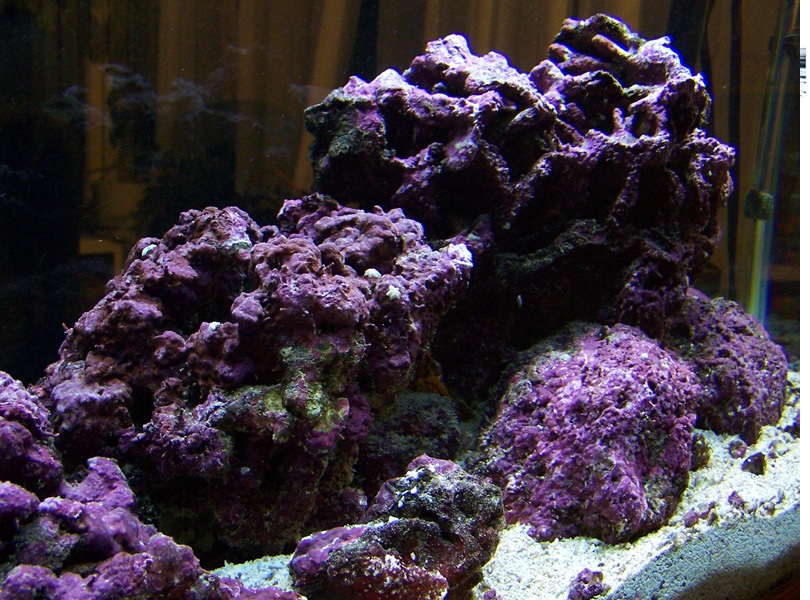Live rock is an integral component of many saltwater aquariums, especially reef setups. Here’s an in-depth look at aquarium live rock:
What is Live Rock?
Live rock isn’t “live” in the sense that it moves or grows. Instead, the term refers to the myriad of micro and macroscopic marine life that the rock hosts. This includes beneficial bacteria, algae, and tiny marine creatures.
Benefits of Live Rock:
- Natural Biological Filtration: The primary function of live rock is to provide biological filtration. The porous nature of the rock allows for beneficial bacteria to colonize, which help in the nitrogen cycle, converting toxic ammonia and nitrite to less harmful nitrate.
- Habitat and Shelter: Live rock provides crevices and hiding spots, essential for many marine creatures, offering them shelter and protection.
- Natural Appearance: They give the aquarium a natural reef-like appearance, adding to the aesthetic value of the tank.
- Base for Coral: Live rock provides a natural substrate for coral attachment and growth.
Types of Live Rock:
- Wild-Caught: Harvested directly from the ocean. While it can be rich in beneficial organisms, there are ethical and environmental concerns due to potential damage to natural coral reefs.
- Aquacultured: These are rocks seeded with marine life and left in the ocean to become colonized. It’s a sustainable alternative to wild-caught rock.
- Base or Dry Rock: Essentially dead live rock. It becomes “live” over time when exposed to a marine environment with existing live rock or live sand.
Curing Live Rock:
Newly acquired live rock often needs to undergo a “curing” process. This process allows for the die-off of any unwanted or decaying organic matter, reducing the risk of ammonia spikes in the main tank.
- Setup: Place the live rock in a container with saltwater, a heater, and a powerhead for water movement.
- Time: The curing process can take from one week to several weeks, depending on the condition of the rock.
- Water Testing: Regularly test the water for ammonia and nitrite. When both reach zero, the rock is considered cured.
Tips for Using Live Rock:
- Arrangement: Ensure stability when placing rocks to prevent them from toppling. Using aquarium putty or glue can help secure structures.
- Avoid Dead Spots: Arrange the rocks to allow water flow around and through them, preventing areas where detritus might accumulate.
- Clean-Up Crew: Snails, hermit crabs, and certain starfish can help keep live rock clean by consuming algae and detritus.
Things to Watch Out For:
- Unwanted Hitchhikers: Live rock can introduce pests like mantis shrimps, predatory worms, or nuisance algae.
- Chemical Leaching: Some rocks may leach harmful substances into the water. This is another reason the curing process is essential.
Conclusion:
Live rock is both decorative and functional, bringing a slice of the reef into one’s aquarium. Proper preparation and maintenance ensure that live rock remains a healthy and beneficial component of the marine environment.

